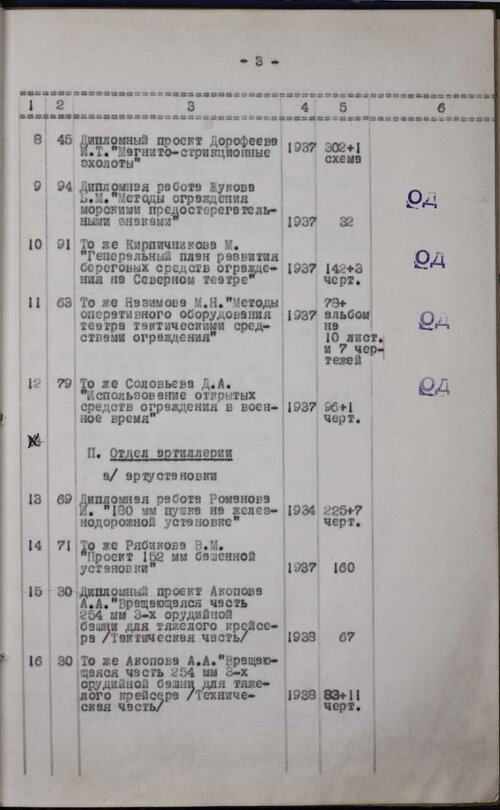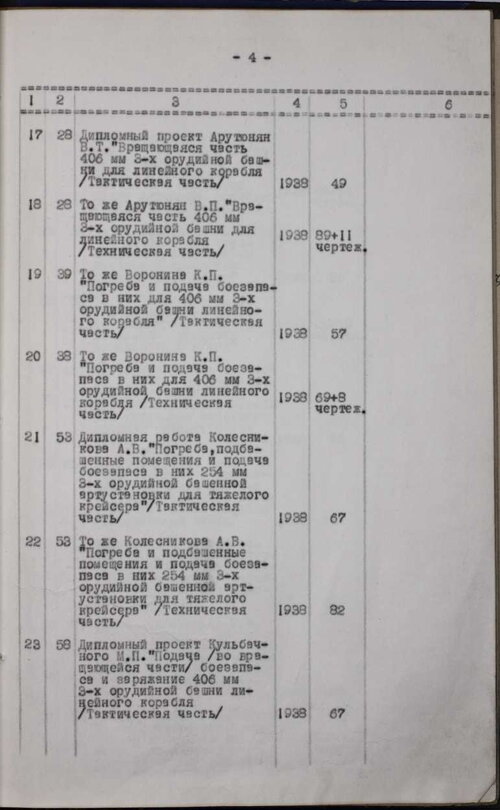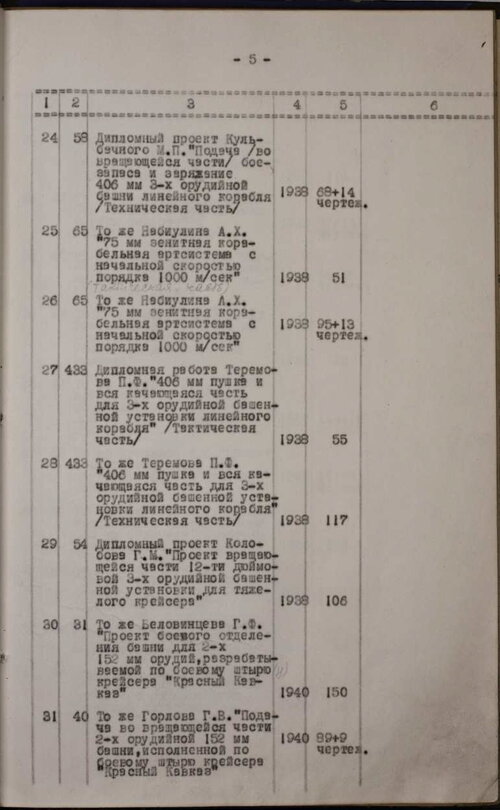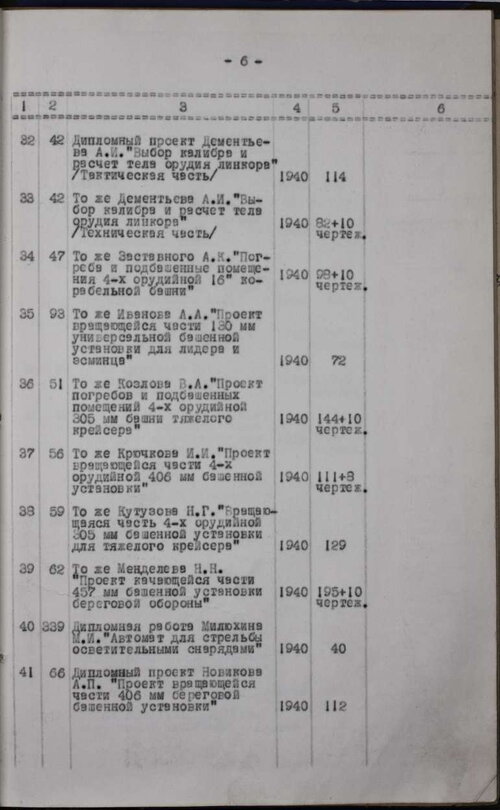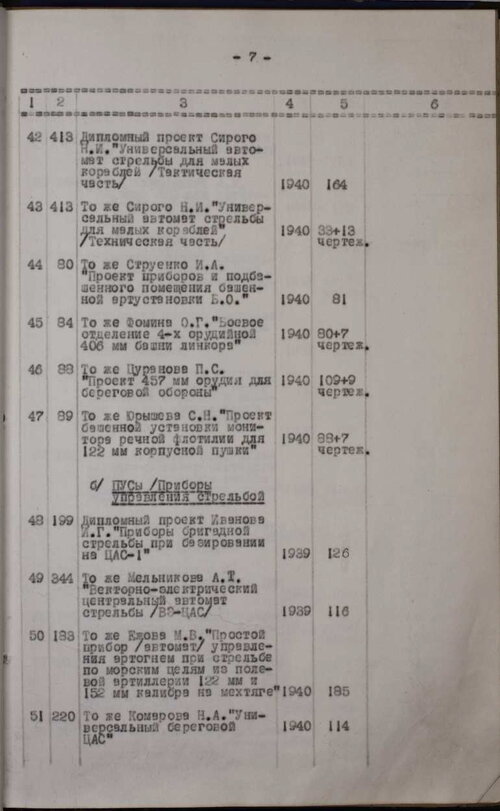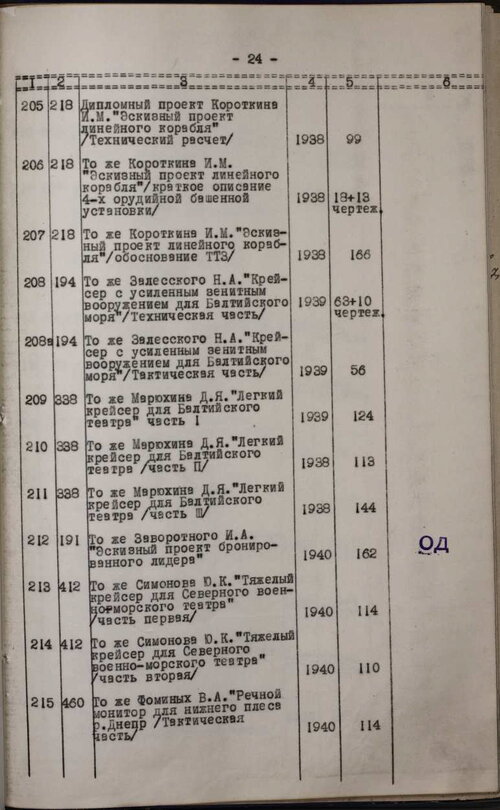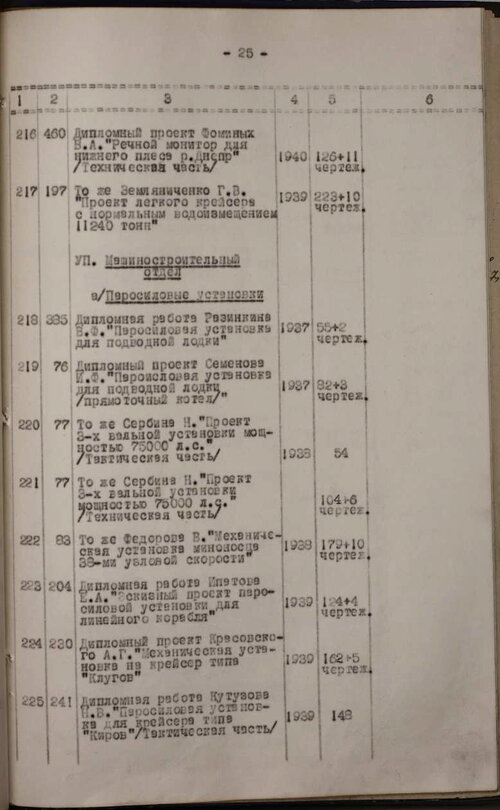Before and during the Second World War, the Naval Academy conducted not only research work, such as "Choosing the main caliber of artillery and justification of firing methods for a battleship with a displacement of 45,000 - 60,000 tons" or "Repelling attacks by enemy light forces by aviation", but also advanced design of ships of various classes. Such design was often carried out as a set of graduation projects of academy officers within a single task. Its results were taken into account when developing technical specifications (TTZ) for ships, their armament, machinery and equipment, and successful design solutions were used in the development of preliminary designs of ships in the NTK of the Navy and design bureaus.
Here are some ship designs developed at the Naval Academy in 1938-40:
1. Battleship with 406-mm artillery in quadruple turrets (probably 3x4) - 1938;
2. Cruiser with powerful anti-aircraft weapons for the Baltic Sea - 1939;
3. Light cruiser for the Baltic Sea - 1938;
4. Armored destroyer leader - 1940;
5. Heavy cruiser for the Northern Fleet (probably 3x4 305 mm) - 1940;
6. River monitor for the lower reaches of the Dnieper river - 1940;
7. Light cruiser with a displacement of 11240 tons - 1939.
New artillery systems were developed for ships and coastal batteries, such as:
1. 3-gun turret 406mm for battleship - 1938;
2. 3-gun turret 254mm for heavy cruiser - 1938;
3. 406 mm cannon for a 3-gun battleship turret - 1938;
4. 3-gun 12" (305 mm) turret for heavy cruiser - 1938;
5. 2-gun 152mm turret for rearmament of the light cruiser "Krasniy Caucas" - 1940;
6. 4-gun 16" (406 mm) turret for battleship - 1940;
7. 130mm universal turret for destroyers and destroyer leaders - 1940;
8. 457mm coastal defense turret- 1940;
9. 406mm coastal defense turret - 1940;
10. 4-gun turret 305mm for heavy cruiser - 1940;
11. 457mm coastal defense gun - 1940;
12. 122mm turret for river monitor - 1940.
Here are some ship designs developed at the Naval Academy in 1938-40:
1. Battleship with 406-mm artillery in quadruple turrets (probably 3x4) - 1938;
2. Cruiser with powerful anti-aircraft weapons for the Baltic Sea - 1939;
3. Light cruiser for the Baltic Sea - 1938;
4. Armored destroyer leader - 1940;
5. Heavy cruiser for the Northern Fleet (probably 3x4 305 mm) - 1940;
6. River monitor for the lower reaches of the Dnieper river - 1940;
7. Light cruiser with a displacement of 11240 tons - 1939.
New artillery systems were developed for ships and coastal batteries, such as:
1. 3-gun turret 406mm for battleship - 1938;
2. 3-gun turret 254mm for heavy cruiser - 1938;
3. 406 mm cannon for a 3-gun battleship turret - 1938;
4. 3-gun 12" (305 mm) turret for heavy cruiser - 1938;
5. 2-gun 152mm turret for rearmament of the light cruiser "Krasniy Caucas" - 1940;
6. 4-gun 16" (406 mm) turret for battleship - 1940;
7. 130mm universal turret for destroyers and destroyer leaders - 1940;
8. 457mm coastal defense turret- 1940;
9. 406mm coastal defense turret - 1940;
10. 4-gun turret 305mm for heavy cruiser - 1940;
11. 457mm coastal defense gun - 1940;
12. 122mm turret for river monitor - 1940.

